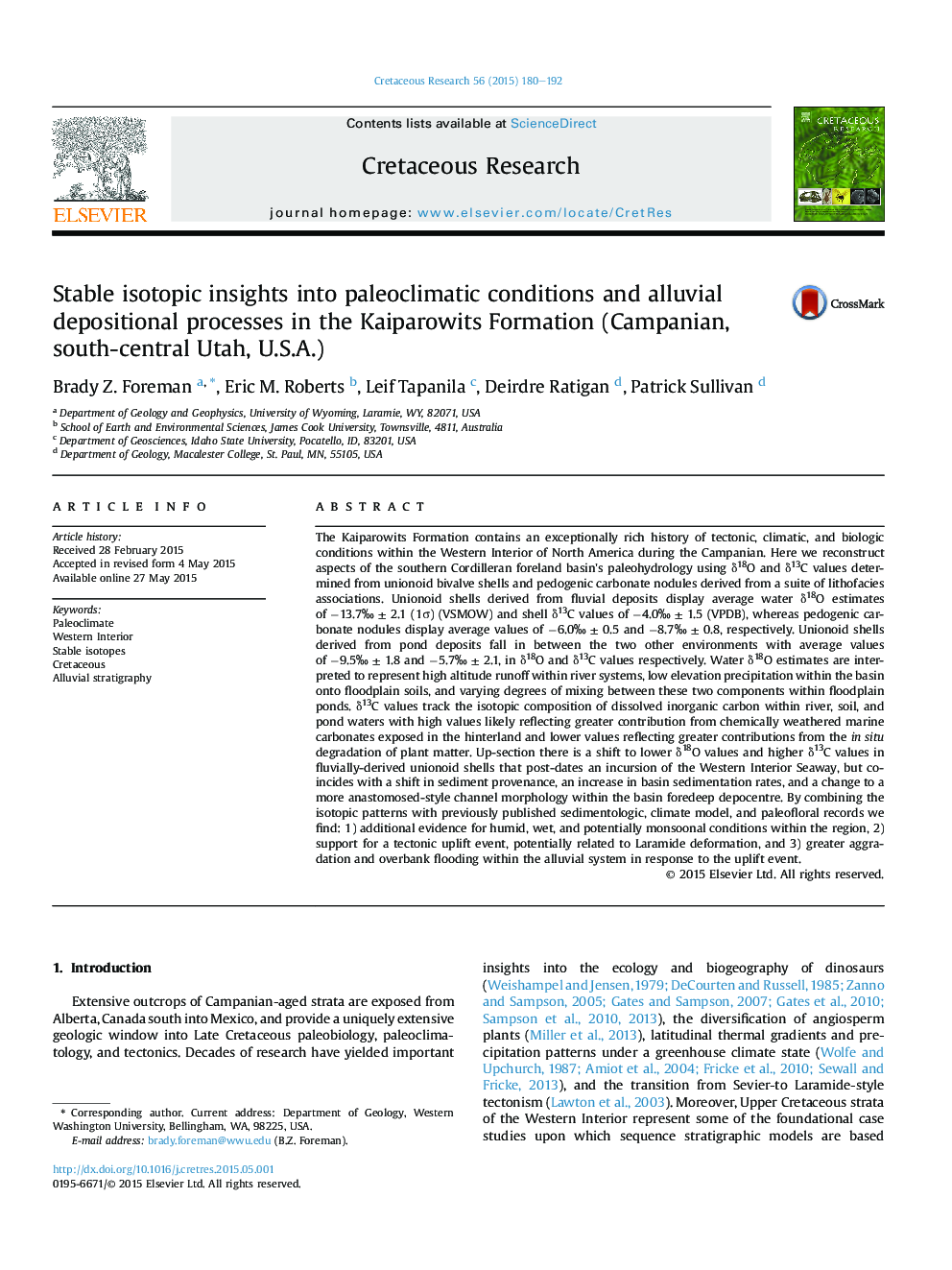| کد مقاله | کد نشریه | سال انتشار | مقاله انگلیسی | نسخه تمام متن |
|---|---|---|---|---|
| 4746933 | 1642067 | 2015 | 13 صفحه PDF | دانلود رایگان |

• Paleohydrologic reconstruction using stable isotope patterns across a foreland basin.
• Secular shift in oxygen isotope values consistent with an uplift event.
• Depositional pattern consistent with sequence stratigraphic models.
• Evidence for different modes of floodplain deposition and river behavior.
The Kaiparowits Formation contains an exceptionally rich history of tectonic, climatic, and biologic conditions within the Western Interior of North America during the Campanian. Here we reconstruct aspects of the southern Cordilleran foreland basin's paleohydrology using δ18O and δ13C values determined from unionoid bivalve shells and pedogenic carbonate nodules derived from a suite of lithofacies associations. Unionoid shells derived from fluvial deposits display average water δ18O estimates of −13.7‰ ± 2.1 (1σ) (VSMOW) and shell δ13C values of −4.0‰ ± 1.5 (VPDB), whereas pedogenic carbonate nodules display average values of −6.0‰ ± 0.5 and −8.7‰ ± 0.8, respectively. Unionoid shells derived from pond deposits fall in between the two other environments with average values of −9.5‰ ± 1.8 and −5.7‰ ± 2.1, in δ18O and δ13C values respectively. Water δ18O estimates are interpreted to represent high altitude runoff within river systems, low elevation precipitation within the basin onto floodplain soils, and varying degrees of mixing between these two components within floodplain ponds. δ13C values track the isotopic composition of dissolved inorganic carbon within river, soil, and pond waters with high values likely reflecting greater contribution from chemically weathered marine carbonates exposed in the hinterland and lower values reflecting greater contributions from the in situ degradation of plant matter. Up-section there is a shift to lower δ18O values and higher δ13C values in fluvially-derived unionoid shells that post-dates an incursion of the Western Interior Seaway, but coincides with a shift in sediment provenance, an increase in basin sedimentation rates, and a change to a more anastomosed-style channel morphology within the basin foredeep depocentre. By combining the isotopic patterns with previously published sedimentologic, climate model, and paleofloral records we find: 1) additional evidence for humid, wet, and potentially monsoonal conditions within the region, 2) support for a tectonic uplift event, potentially related to Laramide deformation, and 3) greater aggradation and overbank flooding within the alluvial system in response to the uplift event.
Journal: Cretaceous Research - Volume 56, September–December 2015, Pages 180–192